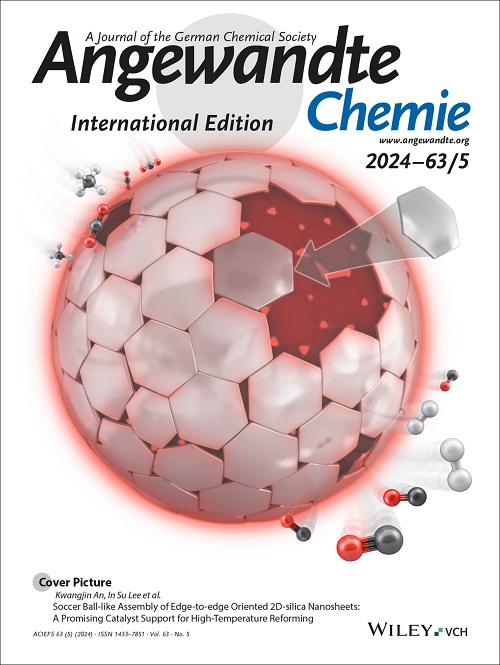Efficient Electrosynthesis of Valuable para-Benzoquinone from Aqueous Phenol on NiRu Hybrid Catalysts
IF 16.1
1区 化学
Q1 CHEMISTRY, MULTIDISCIPLINARY
引用次数: 0
Abstract
Electrocatalytic oxidation of aqueous phenol to para-benzoquinone (p-BQ) offers a sustainable approach for both pollutant abatement and value-added chemicals production. However, achieving high phenol conversion and p-BQ yield under neutral conditions remains challenging. Herein, we report a Ni(OH)2-supported Ru nanoparticles (NiRu) hybrid electrocatalyst, which exhibits a superior phenol conversion of 96.5% and an excellent p-BQ yield of 83.4% at pH 7.0, significantly outperforming previously reported electrocatalysts. This exceptional performance benefits from the triple synergistic modulation of the NiRu catalyst, including enhanced phenol adsorption, increased p-BQ desorption, and suppressed oxygen evolution. By coupling a flow electrolyzer with an extraction-distillation separation unit, the simultaneous phenol removal and p-BQ recovery are realized. Additionally, the developed electrocatalytic system with the NiRu/C anode displays good stability, favorable energy consumption, and reduced greenhouse gas emissions for phenol-containing wastewater treatment, demonstrating its potential for practical applications. This work offers a promising strategy for achieving low-carbon emissions in phenol wastewater treatment.在镍钌杂化催化剂上从水性苯酚中高效电合成有价值的对苯醌
通过电催化将水性苯酚氧化成对苯醌(p-BQ),是一种既能减少污染物又能生产高附加值化学品的可持续方法。然而,在中性条件下实现高苯酚转化率和对苯醌产量仍具有挑战性。在此,我们报告了一种 Ni(OH)2-supported Ru 纳米粒子(NiRu)混合电催化剂,该催化剂在 pH 值为 7.0 的条件下,苯酚转化率高达 96.5%,p-BQ 收率高达 83.4%,明显优于之前报告的电催化剂。这种优异的性能得益于 NiRu 催化剂的三重协同调制,包括增强苯酚吸附、增加 p-BQ 解吸和抑制氧进化。通过将流动电解槽与萃取-蒸馏分离装置耦合,实现了同时去除苯酚和回收 p-BQ。此外,所开发的采用 NiRu/C 阳极的电催化系统在含酚废水处理方面具有良好的稳定性、能耗低、温室气体排放少等特点,证明了其在实际应用中的潜力。这项工作为苯酚废水处理中实现低碳排放提供了一种前景广阔的策略。
本文章由计算机程序翻译,如有差异,请以英文原文为准。
求助全文
约1分钟内获得全文
求助全文
来源期刊
CiteScore
26.60
自引率
6.60%
发文量
3549
审稿时长
1.5 months
期刊介绍:
Angewandte Chemie, a journal of the German Chemical Society (GDCh), maintains a leading position among scholarly journals in general chemistry with an impressive Impact Factor of 16.6 (2022 Journal Citation Reports, Clarivate, 2023). Published weekly in a reader-friendly format, it features new articles almost every day. Established in 1887, Angewandte Chemie is a prominent chemistry journal, offering a dynamic blend of Review-type articles, Highlights, Communications, and Research Articles on a weekly basis, making it unique in the field.

 求助内容:
求助内容: 应助结果提醒方式:
应助结果提醒方式:


